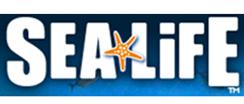Year 3: Animals, including humans
This list consists of lesson plans, activities and video clips to support the teaching of Animals, including humans at Year Three. It contains tips on using the resources, suggestions for further use and background subject knowledge. Possible misconceptions are highlighted so that teachers may plan lessons to facilitate correct conceptual understanding. Designed to support the new curriculum programme of study it aims to cover many of the requirements for knowledge and understanding and working scientifically. The statutory requirements are that children are taught to:
• identify that animals, including humans, need the right types and amount of nutrition, and that they cannot make their own food; they get nutrition from what they eat
• identify that humans and some other animals have skeletons and muscles for support, protection and movement.
Visit the primary science webpage to access all lists.
Bone Bingo
We all have skeletons inside our bodies. The function of which is to protect organs like the heart, lungs and brain and to provide support, so we stand up instead of wobbling like jelly. Because our muscles connect to our bones, our skeletons also help us to walk, run, lift and play sport. Find out where children think bones are by asking them to draw bones inside an outline of the body before looking at a model skeleton and identifying the main bones. This worksheet of a dancing skeleton can be used to label the main bones, though it will need to be adapted for different levels of learner. Bone Bingo would make a useful plenary or revision session when learning about the structure and function of the skeleton.
National SEA LIFE Centre: Key Stage Two Resources *suitable for home teaching*
Develop thinking skills by observing and comparing the movement of vertebrate and invertebrate animals which live in a marine environment. Children could be given cards with the animals on and predict how they move by looking at their anatomy. The PowerPoint then goes on to describe how the different animals move using various body parts. Children could be asked to sort animals into those with an internal skeleton and those with an external skeleton or no skeleton. Challenge children to find other animals which could belong to these groups. Children could act out how some of the animals move and others guess which animal they are showing. Activity ideas and worksheets are found under the lesson Movement and the related PowerPoint may be found in here.
The Great British Space Dinner - Primary Resource
Children love learning about space, so why not look at a healthy balanced diet for an astronaut? Or even design a lunch box? The Great British Space Dinner Challenge contains six lessons which help children find out more about life on board the International Space Station (ISS) and the importance of exercise and a balanced diet for astronauts whilst they are living there.
Children may believe that ‘food is energy’, rather than realising that it provides us with fuel. The fuel is then respired, using oxygen, to produce carbon dioxide and water with energy becoming available during the reaction.
Click here if you are interested in further activities which support Tim Peake’s Mission and the wider context of space.
Animals, Including Humans
This resource provides a selection of lesson plans, worksheets and teachers notes relating to animals including humans at Year Three. They include activities in which children find out about food groups and healthy balanced diets and learn about the human digestive system and how food is transported around the body.
Lesson ideas are also provided for finding out about the structure and function of the skeleton, comparing skeletons, muscles and joints and investigating the effect of exercise on the body.
A good of way of showing that bones are living and growing is to carry out a survey on bone length across the school to see if our forearms grow as they get bigger. A modal or median value of each sample could be taken as an average. A variation could be to collect evidence by measuring different body parts to answer questions.
Ask children to sort the pictures of animal skeletons into different groups, and try to identify them. It is a great way of showing similarities and differences between animals
Making a moving joint will help children understand the role bones and muscles have in movement. This clip is a good way of showing muscles in action.
When learning about balanced diets for humans why not also look at the diets of different animals and ask children to research the diet of 3 different animals, an omnivore, herbivore and carnivore.
Incredible ingredients!
Explore the nutritional content of food and how humans obtain nutrition from the food they eat. They investigate the amount of sugar in different fizzy drinks and what affect this has on whether a can floats or sinks. They also find out about food choices in different parts of the world, looking at similarities and differences.
Building a Bionic Hand
In this activity, pupils will build a bionic hand made out of cardboard, strings, straws and rubber bands. They will relate the bionic hand to their own hand to understand the function of the fingers and the importance of the thumb, to grab or hold objects with different shapes and forms. Pupils will also learn that it would not be possible to move the human hand if it was only composed of bones. The pupils will understand how bones, muscles, tendons and ligaments work, by comparing them with the materials used on the bionic hand to move the fingers.
Explore, Discover, Inspire: Practical Work in Primary Science
Present children with a mystery to be solved when a skeleton is discovered during renovation work at a local site of historical interest. Children will need to collect data and make comparisons between the skeleton and people of various ages in their school.
Ask children to decide what data to collect, and then measure accurately, present data and to look for patterns. Using their findings they may then work at what age the individual was when they died. This activity is on pages 21 and 22 of the pdf. Children may believe that bones are dead material, as they are often associated with dead animals. It is important to point out that bones in living animals are composed of living cells. One way of helping them understand this is to talk about when a person breaks a bone it will mend itself in time. All children should know someone who has broken a bone at some point!
The Human Body Game
This resource contains three lessons including one on the skeleton and muscles. An interactive simulation explores the skeletal-muscular system and through a series of separate activities children identify the key features of the skeleton and investigate their functions. Children design structures which provide support and compare them to different bones in the body. In addition, they create models of pairs of muscles and show how they work antagonistically to produce movement of the forearm round the elbow joint. Children can arrange the bones of the body to build a skeleton using the 'Build a Body' game.








